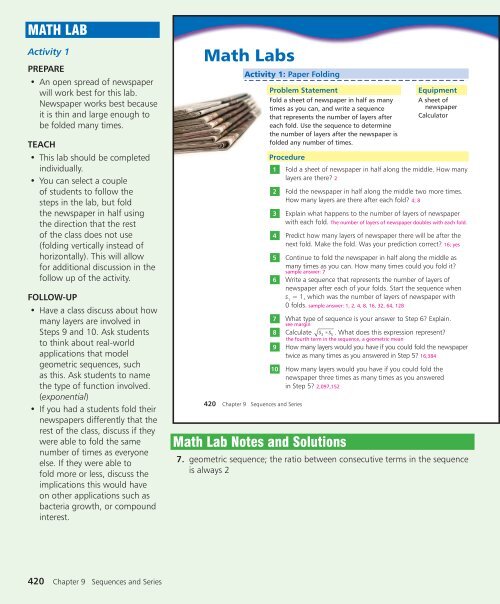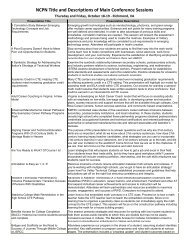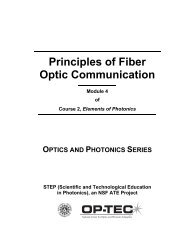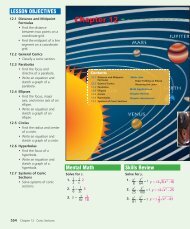hvvrq $ulwkphwlf 6htxhqfhv dqg 6hulhv - NCPN
hvvrq $ulwkphwlf 6htxhqfhv dqg 6hulhv - NCPN
hvvrq $ulwkphwlf 6htxhqfhv dqg 6hulhv - NCPN
Create successful ePaper yourself
Turn your PDF publications into a flip-book with our unique Google optimized e-Paper software.
MATH LAB<br />
Activity 1<br />
PREPARE<br />
• An open spread of newspaper<br />
will work best for this lab.<br />
Newspaper works best because<br />
it is thin and large enough to<br />
be folded many times.<br />
TEACH<br />
• This lab should be completed<br />
individually.<br />
• You can select a couple<br />
of students to follow the<br />
steps in the lab, but fold<br />
the newspaper in half using<br />
the direction that the rest<br />
of the class does not use<br />
(folding vertically instead of<br />
horizontally). This will allow<br />
for additional discussion in the<br />
follow up of the activity.<br />
FOLLOW-UP<br />
• Have a class discuss about how<br />
many layers are involved in<br />
Steps 9 and 10. Ask students<br />
to think about real-world<br />
applications that model<br />
geometric sequences, such<br />
as this. Ask students to name<br />
the type of function involved.<br />
(exponential)<br />
• If you had a students fold their<br />
newspapers differently that the<br />
rest of the class, discuss if they<br />
were able to fold the same<br />
number of times as everyone<br />
else. If they were able to<br />
fold more or less, discuss the<br />
implications this would have<br />
on other applications such as<br />
bacteria growth, or compound<br />
interest.<br />
<br />
<br />
<br />
<br />
<br />
<br />
<br />
<br />
<br />
<br />
<br />
<br />
<br />
<br />
<br />
<br />
<br />
<br />
<br />
<br />
<br />
<br />
<br />
<br />
<br />
<br />
<br />
<br />
<br />
<br />
<br />
<br />
<br />
<br />
<br />
<br />
<br />
<br />
<br />
<br />
<br />
<br />
3 5<br />
<br />
Math Lab Notes and Solutions<br />
<br />
<br />
<br />
<br />
<br />
7. geometric sequence; the ratio between consecutive terms in the sequence<br />
is always 2<br />
420 Chapter 9 Sequences and Series











